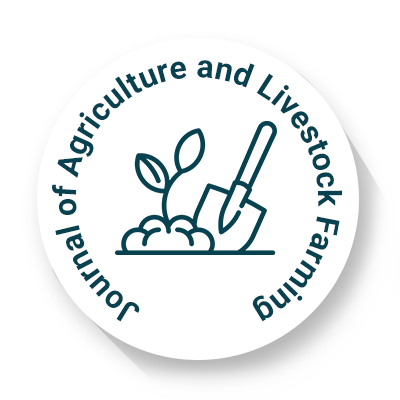
Journal of Agriculture and Livestock Farming
OPEN ACCESS

OPEN ACCESS
Every organism is derived from its genetic composition and the environment. A gene is a segment of DNA, the cell's hereditary material, that encodes a characteristic, and it can exist in different forms across organisms. These different forms are called alleles; the combination of alleles an individual possesses for a particular gene is their genotype. There are different types of genotypes depending on which versions of a gene are inherited. Studying the relationship between heredity and genetic variations can reveal various diseases underlying genetic causes. By identifying the genes responsible for a particular disease, targeted and effective treatments can be induced for some genetic disorders, and also the root cause can be addressed. Genotypic research reveals the complex mechanisms behind plant development and adaptation, providing valuable insights into molecular factors that govern agricultural and livestock performances. Innovations and developments in genomic technology have reformed our ability to understand the genetic variations, offering a novel understanding of the hereditary mechanisms contributing to the required and desirable traits in agriculture. The process of experimenting and determining the genotype by examining the DNA sequence.
The set of physiological, structural, observable, and measurable performance-related traits of an organism that is shaped by the continuous influence of its environment is known as the Phenotype. The phenotype is influenced by the genotype interaction with the environment. In plants, the Phenotypic traits appear in the growth patterns, structural formations, reproductive timing, and the ability to withstand and persist despite the ongoing environmental stressors or degradation. Leaves, stems, flowers, and fruits exhibit unique characteristics architected by genetic instructions and changing environment factors. The manifestation of these traits stimulates how a crop interacts with environmental and biological influences, eventually affecting its productivity and survival. Even the slightest difference in plant architecture or its biological structure can reveal the underlying mechanisms of adaptation, guiding efforts to enhance and optimize agricultural practices. The assessment of the phenotype can be used for an improved understanding of the relationship between varietal responses to different climate and soil conditions and management strategies.
An organism’s genotype will often affect its phenotype. In Mendelian genetics, one allele is dominant over another, and the dominant allele completely hides the recessive allele. Due to this dominant pattern, a heterozygous individual will express only their dominant allele and thus will have a dominant phenotype. A homozygous recessive individual is the only type of individual who expresses the recessive phenotype. In this course, many problems will provide the genotype or phenotype of individuals.